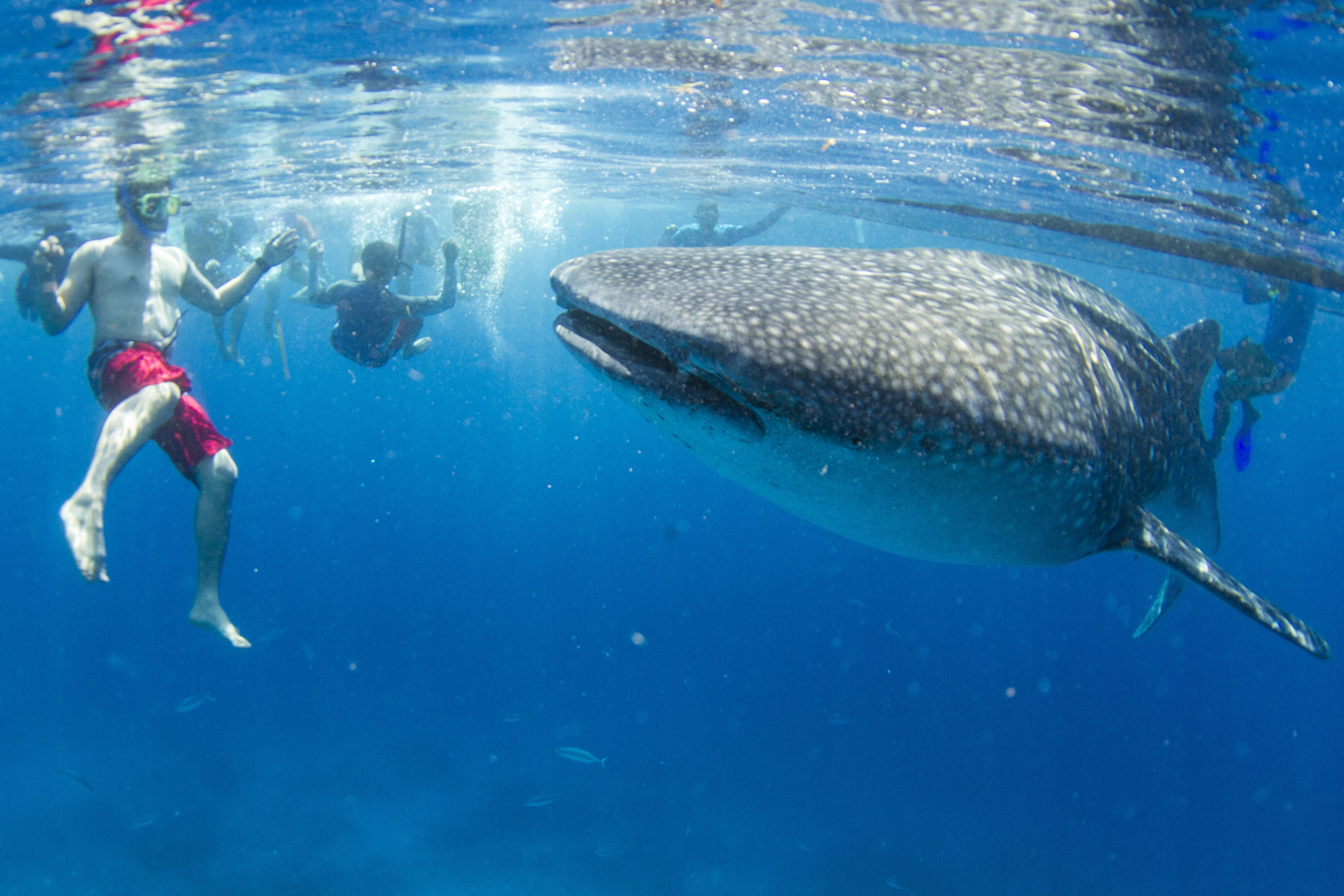
Whale shark watching in the town of Oslob in south Cebu has been drawing hordes of international tourists who want to have a closer glimpse of the gentle giants of the sea. |CDN file photo
CEBU CITY, Philippines —Whale sharks which locals refer to as “tuki” (butanding) are the attraction that brought tourists’ eyes, foreign and locals alike, to the southern Cebu town of Oslob.
For years, Oslob’s clear water and the presence of the big friendly sharks had provided a livelihood for the locals — from operating pump boats to bring the guests to the spots where the whale sharks swim to selling food, souvenirs to providing accommodation to tourists.
With their dependence on tourism for their source of income, the locals were among those severely affected when tourism activities halted amid the threats of the novel coronavirus disease and subsequent quarantine control measures that were put in place.
On Thursday, Cebu Governor Gwendolyn Garcia signed her Executive Order no. 20-A, which sets the general and individual protocols for each tourism activity in the province’s towns, while the province is under a more relaxed modified general community quarantine (MGCQ).
Read: FULL TEXT OF EO 20-A
Under the guidelines of the Interagency Task Force for the Management of Emerging Infectious Diseases (IATF-MEID), tourism activities are permitted in areas under MGCQ.
Garcia, upon signing the EO, said the whale shark watching activity in Oslob may be the first to reopen in the province, starting next week, as the operators here, from accommodation establishments to guides and to boatmen, are already organized.
One Cebu Online Portal
Under the EO, all tourism offerings in the province will be coursed through the online portal managed by the Cebu Provincial Tourism Task Force.
“Guests who arrive at the destination without bookings shall be assisted by the establishment to ensure that booking is done thru the portal before allowing them to participate in any activity,” the EO reads.
The portal contains all tour packages offered by every town. Before visiting the destination, tourists should book and pay ahead for their desired tourism package. Payments are coursed through money transfer services.
All payments will be received by the LGU which will then be divided among the tourism operators depending on the tour packages availed of by the guests.
Upon full payment, the guests will be issued with a radio frequency ID (RFID) confirmation code which they will present to their destination on their booked date in exchange for an RFID bracelet.
The RFID bracelet may be reloaded with cash so it will serve as the e-wallet of the visitor.
Air purifiers and UV germicidal light disinfection
Frontline personnel and guests are all required to wear personal air purifiers. If the guests do not have any, the tourism establishment may rent out the equipment to the guest which the latter will have to wear throughout the tour.
“Gear and equipment that are rented out should, at the end of each use, be properly sterilized with an Ultraviolet Germicidal Light, with STRICT OBSERVANCE of the instructions on proper handling and use of the device,” the EO mandates.
On top of the general guidelines and observance of health protocols, the EO also sets specific policies that will be observed for each tourism activity that will be allowed to reoperate.
While Garcia’s EO is effective immediately, the governor however clarified that the resumption of tourism activities depends on how “ready” the tourism operators are in terms of compliance with the requirements set for each activity.
Tourism operators should also be accredited by the Department of Tourism and secure its Certificate of Authority to Operate and its local government unit’s special business permit. / dcb